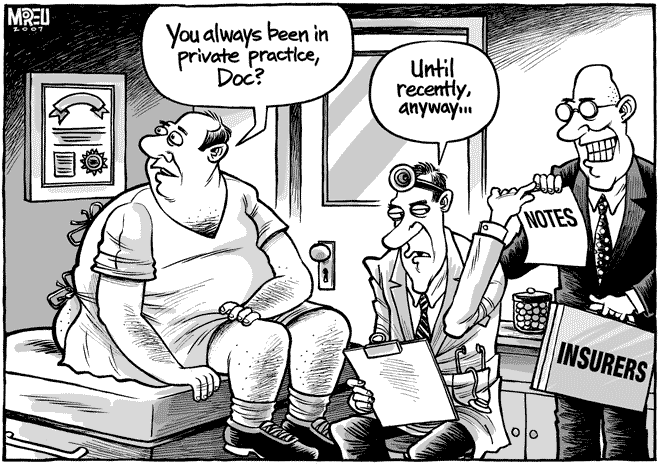Within the past decade alone, the healthcare industry has faced a number of significant shifts in the way care is organized, managed, and delivered. Private practices are having trouble keeping up in the face of issues like healthcare reform and the growth of new, radical technologies. Additionally, physicians face increasingly strenuous work conditions like less reimbursement, more overhead, and less work-life balance. As a result, many practices have dissolved, with physicians joining the ranks of hospitals and other healthcare systems.
The Fall of the Private Practice
A survey performed by the Physicians Foundation found that out of the roughly 20,000 U.S. physicians surveyed, 35% identified themselves as independent. This number was 49% in 2012 and 62% in 2008. These statistics show that private practices are on a clear and swift downward slope. As physicians continue to cite difficulties building and maintaining private practices, it appears that this trend will continue.
Struggles with Regulation & Compliance
Private physicians are challenged by a number of changes in the “red tape” of the healthcare sector. These evolving systems and processes include the switch to ICD-10 for medical billing and coding, evolving HIPAA requirements, meaningful use 2 attestation, and health reform initiatives like the Patient Protection and Affordable Care Act, also called the Affordable Care Act or ObamaCare.
Generally speaking, these changes in regulation and compliance are often resulting in more work and less profit. More manpower is needed to keep up with increasing paperwork, time, and complex systems. However, many private practices can’t find the time to add additional tasks to their existing team and can’t afford to bring in new members who have the expertise needed to implement the needed changes.
Health reform presents a significantly increased level of legal compliance obligations. This has added a new layer of complexity and cost to private practices. For example, the Centers for Medicare and Medicaid Services (CMS) are reducing reimbursements for practices that fail to comply with various initiatives, contributing to financial loss for practices.
EHRs Pose Big Changes
The rise of electronic health records (EHRs) and an extensive list of governing regulations are posing threats to private practices that are new to adopting these technologies. These systems are complex and require special training, as well as ensuring that practices are complying with regulations. Many private practice physicians simply don’t have the time to integrate EHRs properly into their existing team, and lack the resources to add team members with experience.
Younger Physicians Are Opting Out
In many cases, physicians are entering the field burdened with large debts and the desire for financial stability, regular hours, and a stable work-life balance. Factors like these encourage young physicians to join health systems in favor of the trials and tribulations of staring a practice. Furthermore, older physicians are feeling the pressure of less available junior partners, leading many to sell their practices for the shift to a salaried position.
As the government makes strides to improve healthcare for the future, we’ll continue to watch today’s current landscape evolve, which means significant changes for private healthcare.

One Comment